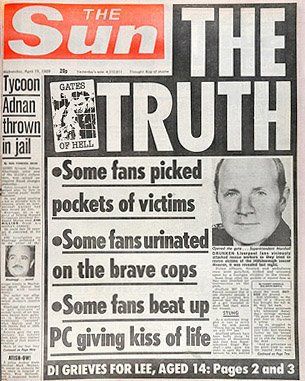I don't get the purpose of this one
Michael Jackson's 2005 Child-Molestation Trial: Journalists Remember the Public Frenzy, Porn, Hijinks
7/1/2016 by Steve Knopper
For CNN's Miguel Marquez, the most surreal day of Michael Jackson's child-molestation trial was March 25, 2005, when the prosecution spent hours displaying images from Barely Legal, Purely 18, Live Young Girls, Finally Legal Freshman Class Orgy and other similar magazines seized from Neverland Ranch. Those in the courtroom, from Michael's parents to the rows of TV and print reporters, slogged through an all-day showing of big-screen pornography. "We're all sitting in back of poor Mrs. Jackson," Marquez tells Billboard. "At one point, she started nodding off. And they put on the screen Busty and Over 50, to which the entire gallery started laughing—it was the one 'off.' And Mrs. Jackson wakes up and says, 'What's going on?' And it's: 'Oh, more porn... '" That one stuck with me."
Jackson's trial lasted from the day Tom Sneddon, the Santa Barbara County district attorney, filed charges on December 18, 2003, to the jury's not-guilty verdict on June 13, 2005. It had extreme moments of drama and spectacle befitting the King of Pop, like the day of his first court appearance, when he jumped on top of a black SUV and performed dance steps to a screaming crowd, or the day he showed up in court in pajamas. (And there was the porn, which prosecutors intended to show as evidence of Jackson's boy-loving depravity, but, in a twisted way, it established him as a straight male.) But for reporters who covered the trial, all day, every day, to huge cable-television audiences and print circulations, it was a grueling process that began daily at 8:30 a.m., ended promptly at 2:30 p.m. and contained just a few short breaks, not even enough to grab lunch.
"It felt like an eight-hour economy-class flight every single day," says Marquez, who covered the trial for CNN, then ABC, and has since returned to CNN as a reporter. "You were all squeezed into this courtroom with the first-class passengers—Michael Jackson and his family. And the cattle car—the rest of us—we were all squeezed together."
Jackson's trial was similar to those of O.J. Simpson, Scott Peterson and others, all covered wall-to-wall by cable television and drawing thousands of fans and gawkers. But Judge Rodney Melville closed the courtroom to live media, unlike Simpson's trial, giving more weight to reporters' brief daily reports. Also, nobody had more fans than Jackson. "It was always a frenzy -- all these rock radio stations who would send one of their interns up to report back live to Moonbeam and Johnny in the Morning, or whatever," says Bruce Rheins, a retired CBS Evening News producer who covered the trial. "We had, like, [the late TV star] Gary Coleman reporting for some station for a while."
Peter Shaplen, a freelance TV producer, coordinated the media pool, streamlined the information-gathering system so the 2,000 or so reporters on hand at the Santa Barbara Superior Courts, in Santa Maria, California, could take turns conducting interviews in an area he called the "green monster." He acted as a liaison between Melville, who had strict rules, including a courtroom cell phone ban, and the reporters. "One tried to hide a wireless microphone right under the window of the jury room," Shaplen says. "It kind of went in waves. But there was a structure to it and a respect for the process."
TV networks ruthlessly competed for scoops. ABC positioned a camera crew on Highway 101 between Santa Maria and Los Olivos, where Jackson lived at Neverland. So in March 2005 when Jackson didn't show up to court due to illness and Melville demanded the criminal defendant's immediate appearance, ABC caught the entourage speeding down the highway. "It was really the most intense thing I've ever covered," recalls Beth Tribolet, who ran ABC's operation. CBS reporters figured out where jurors parked their cars, took down license-plate numbers and worked sources to discern addresses, but ABC scored interviews with nine of the 12 by flying them to New York.
Like some reporters who covered the trial, notably Diane Dimond of Hard Copy, Jim Moret of Inside Edition believes Jackson is a child molester. He acknowledges the prosecution made a weak case, particularly in its reliance on the bizarre, finger-snapping testimony of Janet Arvizo, mother of the 10-year-old boy who accused Jackson of molestation. But he adds: "Are you asking in my gut, did I feel he was guilty? Yeah, I did." Other reporters were dismayed by the openly biased media experts and correspondents who took courtroom seats daily. "There were reporters [at the trial] who had dedicated much of their careers to, for some reason, exposing Michael Jackson as a molester," says Linda Deutsch, the veteran Associated Press trial reporter who filed regular reports from Santa Maria. "I never understood it. And it was very troubling."
Although Jackson received the best possible verdict, the public ordeal of the lengthy trial visibly took a toll on his health; reporters watched in the courtroom as he struggled to sit down and stand up and occasionally did stretching exercises during breaks. (He died on June 25, 2009.) "It was clear to everyone his health was suffering," says Peter Bowes, who covered the trial for BBC News. "He became frailer, a lot thinner—almost, I hate to use this phrase, zombie-like, as he walked in and out.... It was tragic to watch."

